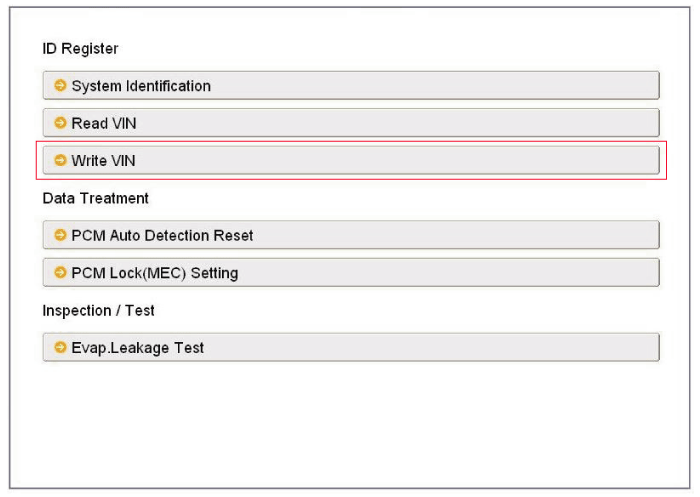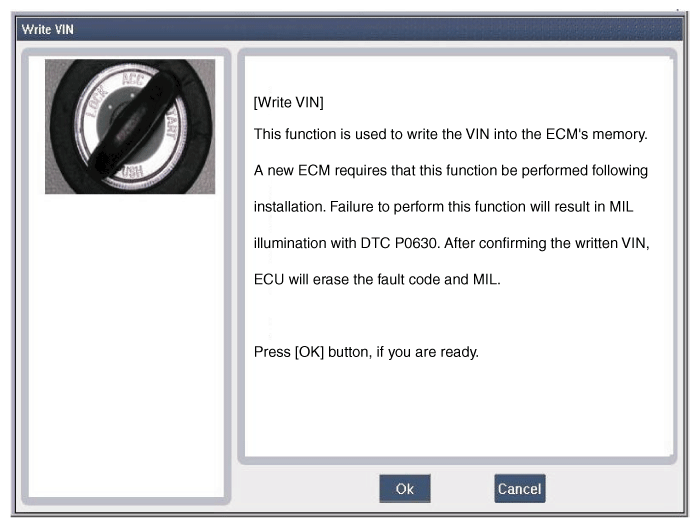 Kia Sorento: ECM Problem Inspection Procedure
Kia Sorento: ECM Problem Inspection Procedure
Second Generation XM (2011-2025) / Kia Sorento XM 2011-2025 Service Manual / Engine Control / Fuel System / Engine Control System / ECM Problem Inspection Procedure
| 1. |
TEST ECM GROUND CIRCUIT: Measure resistance between ECM and chassis
ground using the backside of ECM harness connector as ECM side check
point. If the problem is found, repair it.
|
| 2. |
TEST ECM CONNECTOR: Disconnect the ECM connector and visually
check the ground terminals on ECM side and harness side for bent pins
or poor contact pressure. If the problem is found, repair it.
|
| 3. |
If problem is not found in Step 1 and 2, the ECM could be faulty.
If so, make sure there were no DTC's before swapping the ECM with a
new one, and then check the vehicle again. If DTC's were found, examine
this first before swapping ECM.
|
| 4. |
RE-TEST THE ORIGINAL ECM: Install the original ECM (may be broken)
into a known-good vehicle and check the vehicle. If the problem occurs
again, replace the original ECM with a new one. If problem does not
occur, this is intermittent problem (Refer to ŌĆ£Intermittent Problem
Inspection ProcedureŌĆØ in Basic Inspection Procedure).
|
VIN Programming Procedure
VIN (Vehicle Identification Number) is a number that has the vehicle's
information (Maker, Vehicle Type, Vehicle Line/Series, Body Type, Engine Type,
Transmission Type, Model Year, Plant Location and so forth. For more information,
please refer to the group "GI" in this SERVICE MANUAL). When replacing an ECM,
the VIN must be programmed in the ECM. If there is no VIN in ECM memory, the
fault code (DTC P0630) is set.
The programmed VIN cannot be changed. When writing the VIN, confirm
the VIN carefully
|
| 1. |
Select "VIN Writing" function in "Vehicle S/W Management".
|
| 2. |
Select "Write VIN" in "ID Register".
|
| 3. |
Input the VIN.
|
| 4. |
Turn the ignition switch OFF, then back ON.
|
 Engine Control Module (ECM) Installation
Engine Control Module (ECM) Installation
1.
Install in the reverse order of removal.
ECM installation bolt:
9.8 ~ 11.8 N.m (1.0 ~ 1.2 kgf.m,7.2 ~ 8.7 lb-ft)
ECM ...
 Engine Control Module (ECM) Adjustment
Engine Control Module (ECM) Adjustment
ŌĆó
After replacing the ECM of the vehicle with the immobilizer, the
following procedure must be performed.
1)
[If installing a used ECM]
...
See also:
Rear Disc Brake Components
1. Guide rod bolt
2. Bleed screw
3. Caliper carrier
4. Caliper body
5. Inner pad shim
6. Brake pad
7. Pad retainer
...
Starter Cleaning
1.
Do not immerse parts in cleaning solvent.
Immersing the yoke assembly and/or armature will damage the insulation
wipe these parts with a cloth only.
...
Inspection
ŌĆó
Thoroughly check connectors for looseness, poor connection,
bending, corrosion, cont ...
Copyright ® www.ksmanual.com 2014-2025




